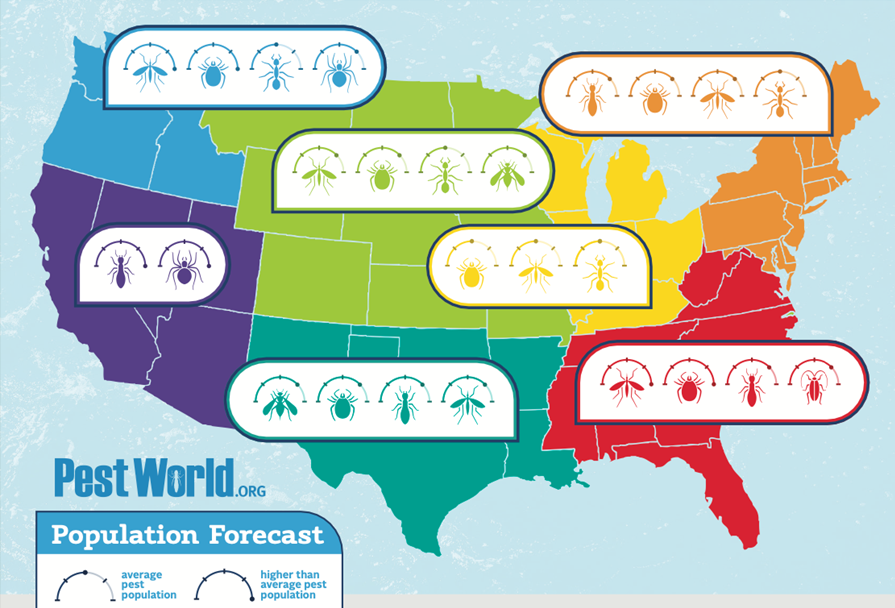The National Pest Management Association (NPMA) released its bi-annual Bug Barometer, which forecasts what Americans can expect from pest populations in their respective regions across the U.S. this spring and summer based on weather patterns, long-term forecasts, and pest biology.

Due to the erratic weather experienced across the U.S. this winter and warm and wet conditions on the horizon, NPMA’s entomology team is expecting a pest-packed spring and summer with ant, tick, mosquito, termite, and spider populations flourishing.
“After the weather many parts of the U.S. experienced this winter, I think everyone is excited for some warmer days. However, we’re not the only ones who enjoy these conditions,” said Jim Fredericks, senior VP of public affairs for NPMA. “Warmth and moisture will allow termite, tick, and mosquito populations to thrive this spring and summer. These pests are a serious concern as they can transmit dangerous diseases and cause structural damage.”
Based on their analysis, the National Pest Management Association’s Spring & Summer 2023 Bug Barometer is forecasting an uptick in pest pressure across the U.S.:
Northeast & New England
A cool start to spring followed by a warm and rainy summer could delay the start of peak pest season. However, warm and sunny days following rain in April and May will trigger termite swarms. Warm and wet conditions throughout the summer could lead to increased tick and mosquito activity. Wet summer conditions in the region could also drive ants indoors.
Southeast
A warm and wet start to spring will allow mosquitoes and ticks to become active early and enable their populations to flourish along with increased termite activity. Warmer-than-normal temperatures throughout the season, coupled with plenty of rain, will create ideal conditions for cockroaches to thrive.
Great Lakes, Ohio Valley & Midwest
A cool start to spring followed by a hot and rainy summer could delay the start of peak pest season. However, warm and wet conditions throughout the summer could lead to increased tick and mosquito activity. Wet summer conditions may also drive ants indoors in search of drier nesting locations.
North Central U.S.
A warm and wet start to spring will allow mosquitoes and ticks to become active early. Hot and dry temperatures throughout the summer may send ants indoors in search of a water source. Warmer-than-normal temperatures throughout the season will also allow stinging insects to thrive.
South Central U.S.
Warmer-than-normal temperatures throughout the spring and summer may support an increase in stinging insects in addition to allowing tick populations to thrive. Above-average rainfall during the spring season can also result in increased termite and mosquito activity.
Southwest U.S.
Mild temps and average rainfall in the spring could contribute to increased termite activity. In areas with increased precipitation, spider populations will thrive.
Northwest U.S.
Mild temps and early season rainfall could support an increase in mosquito and tick activity. Warm and wet summer conditions may also drive ants indoors in search of dry ground and provide conditions for spider population growth.
“When heading outdoors to enjoy the warm weather, be sure to apply an EPA-registered bug repellent containing at least 20% DEET to protect from pest bites. Also, consider wearing long clothing and tucking pants into socks, especially if spending time in higher grass,” said Fredericks.
“Above all else, if you suspect a pest infestation on your property, contact a licensed pest control professional. They can properly identify the issue and recommend a course of action that’s right for you,” added Fredericks.
For more information about pest prevention and NPMA’s Bug Barometer forecast, visit PestWorld.org.
ALSO READ: How to Launch an Integrated Pest Management Program
